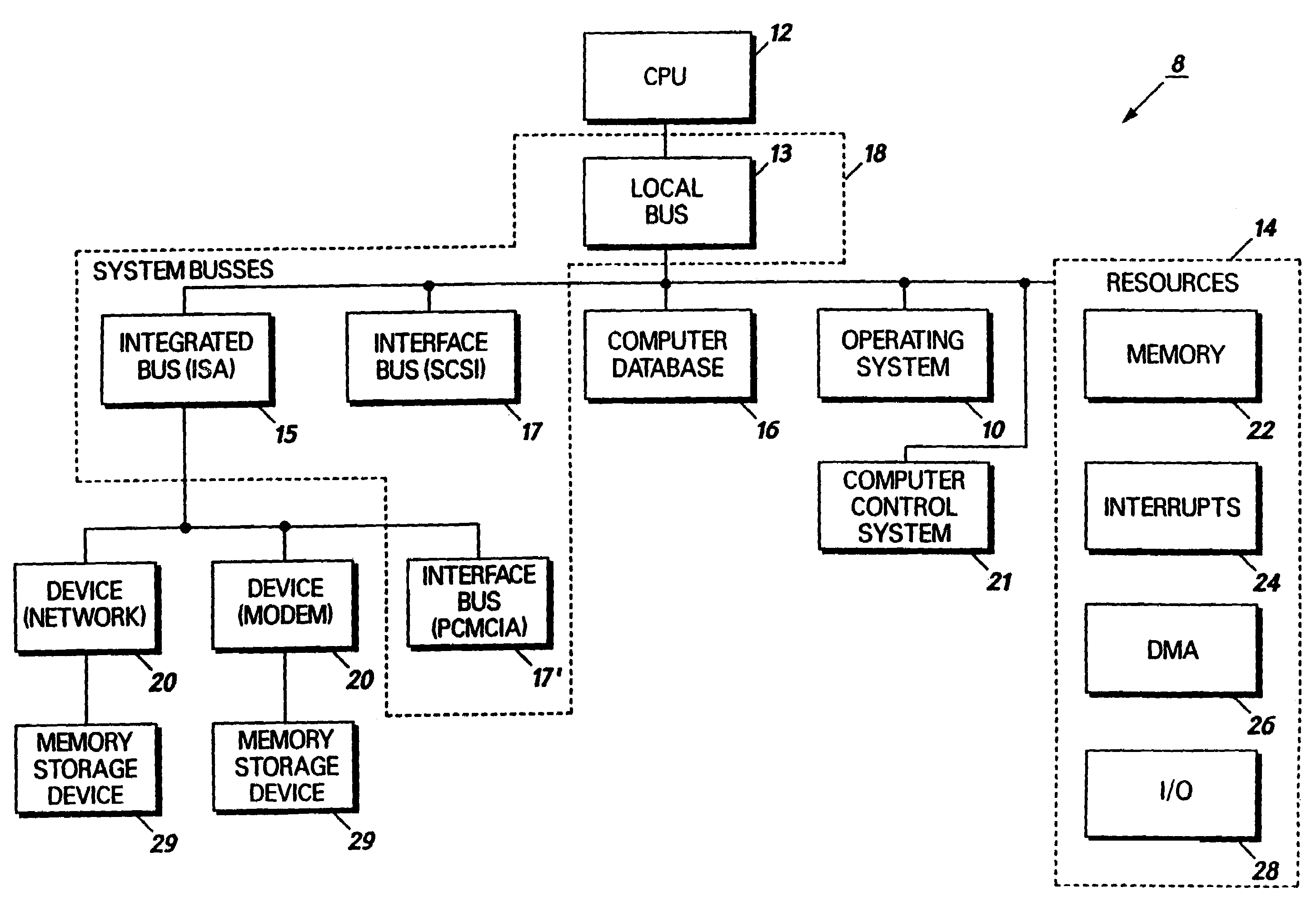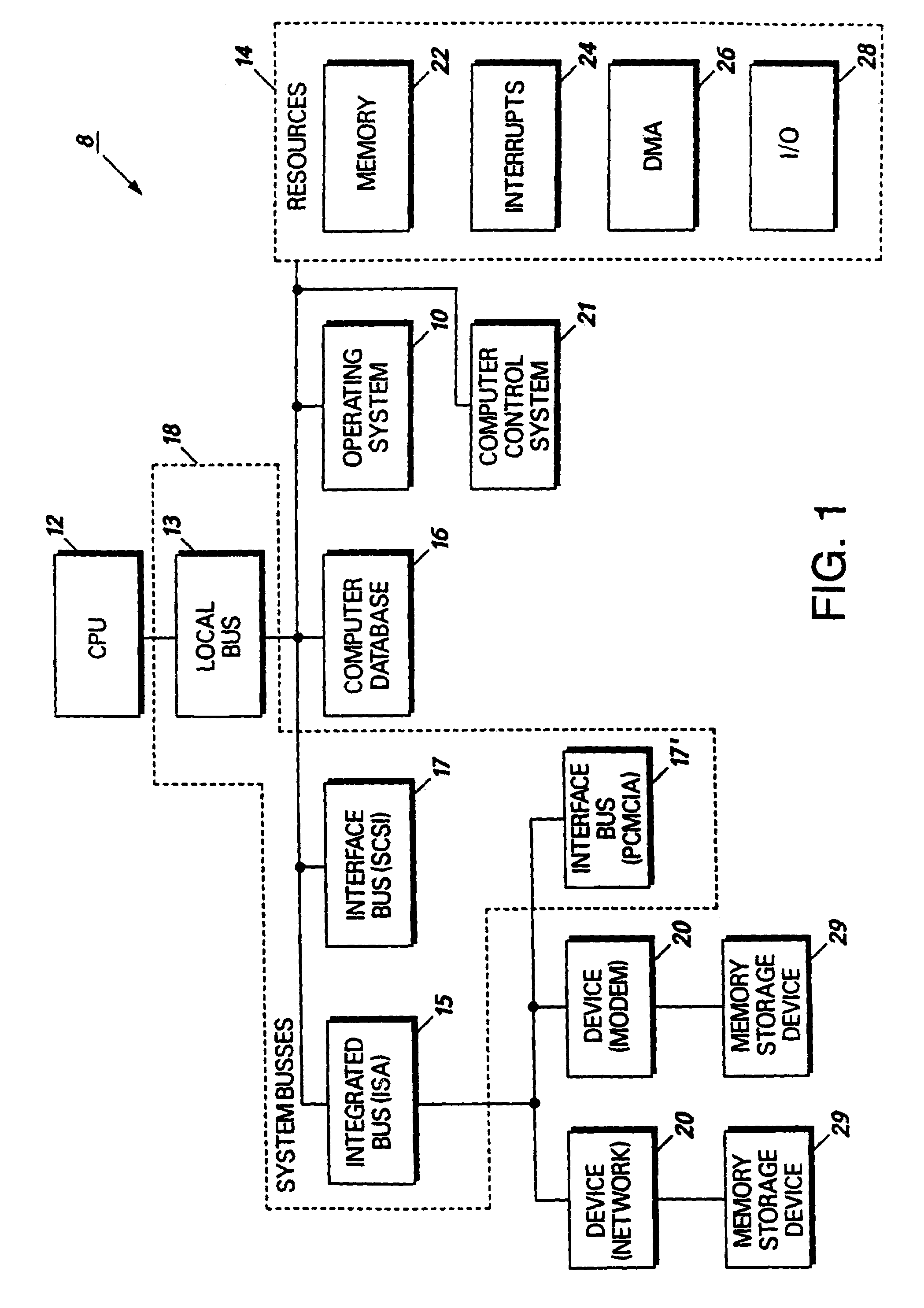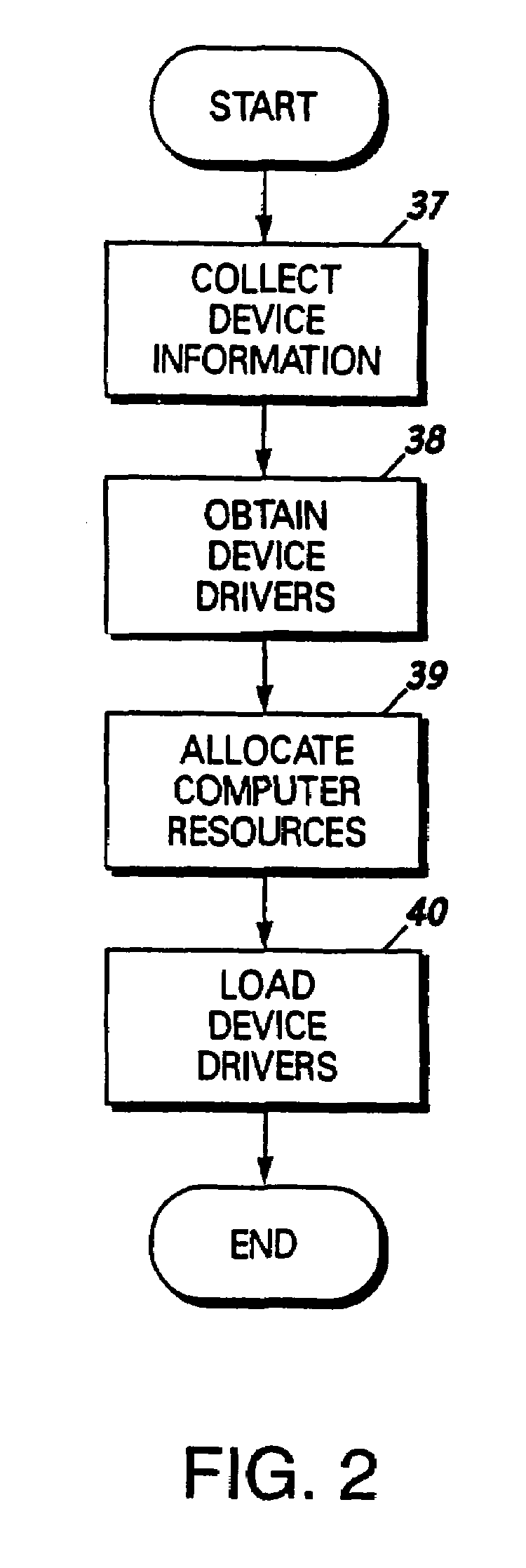System for allocating resources in a computer system
- Summary
- Abstract
- Description
- Claims
- Application Information
AI Technical Summary
Benefits of technology
Problems solved by technology
Method used
Image
Examples
Embodiment Construction
[0043]To overcome the frustration of users with the present complicated and technical configuration processes for personal computers, the present invention provides a system for configuring a peripheral device or an add-on type adapter board for use with a base or mobile computer. In general, the present invention enables a user to connect a new device to the computer, power the computer, and have the device properly work with the computer without substantial user intervention. To provide this capability, the present invention determines a successful allocation of resources and enables the devices and the application programs to fully utilize the available resources. This can be accomplished for numerous computer bus architectures and types of devices.
[0044]The detailed description which follows is presented largely in terms of methods, processes and symbolic representations of operations of data bits manipulated by a processing unit and maintained within data structures supplied by...
PUM
 Login to View More
Login to View More Abstract
Description
Claims
Application Information
 Login to View More
Login to View More - R&D
- Intellectual Property
- Life Sciences
- Materials
- Tech Scout
- Unparalleled Data Quality
- Higher Quality Content
- 60% Fewer Hallucinations
Browse by: Latest US Patents, China's latest patents, Technical Efficacy Thesaurus, Application Domain, Technology Topic, Popular Technical Reports.
© 2025 PatSnap. All rights reserved.Legal|Privacy policy|Modern Slavery Act Transparency Statement|Sitemap|About US| Contact US: help@patsnap.com



